Today societies revisited by anthropologists and archaeologists
The European Research Council (ERC) funds frontier research across all fields, including Social Sciences and Humanities (SH). To date, nearly 500 projects are financed by the ERC in the SH domain, with a total budget of around €700 million. The ERC budget is divided in three domains, namely Physical Sciences and Engineering, Life Sciences and Social Sciences and Humanities. Around 17 % of the ERC budget goes to projects in the domain of Social Sciences and Humanities.

The European Research Council (ERC) funds frontier research across all fields, including Social Sciences and Humanities (SH). To date, nearly 500 projects are financed by the ERC in the SH domain, with a total budget of around €700 million. The ERC budget is divided in three domains, namely Physical Sciences and Engineering, Life Sciences and Social Sciences and Humanities. Around 17 % of the ERC budget goes to projects in the domain of Social Sciences and Humanities. This corresponds well to the share of applicants for ERC competitions in this domain; the distribution of ERC funds is driven by demand. The ERC is however keen to see more top researchers apply for ERC funding in the field of SH.
Part of Social Sciences and the Humanities, anthropology and archaeology provide vital knowledge and understanding of the origins of human species, their social and cultural relations, their physical traits and behaviours of these diverse groups. Furthermore, anthropologists and archaeologists endeavour to show how the evolutionary path of Homo sapiens has influenced the human past and present, and how it could potentially influence human culture and future social organisation. Many ERC-funded projects in this field address fundamental issues, such as the roots of food globalisation in prehistory, mobility of people and ideas during the Bronze Age, urban diversification in global cities across the years, the prediction of people’s response to water disasters, or the historical dimensions of herding practices in Europe.
ERC at the American Anthropological Association Annual Meeting 2012, San Francisco, USA Crossing borders in the name of scientific excellence: the European Research Council (ERC) and its funding opportunities for anthropologists from all over the world. Friday 16 November 2012, from 12:15 pm - 1:30 pm
Food globalisation has its roots in prehistory
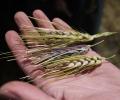 There is evidence that food globalisation already existed in prehistory. By using state-of-the-art archaeological and genetic techniques, Professor Martin Jones from the University of Cambridge explores when and how that early globalisation of staple foodstuffs happened, its consequences for human societies in two of his fieldwork areas, West China and Kazakhstan, and how these trade exchanges affected the evolutionary pathways of those food plants. The sites he has chosen for his project yield direct data of crop remains (such as wheat barley and millet), radiocarbon dates of these macrofossils, palaeodietary evidence from human and animal bones, all of which is contextualizing with a cross continental study of genetic diversity within these plants. These combined analyses should help the team to better understand the domestication pathways of the crops and their geographies. The outcomes of this project in archaeobotany, archaeogenetics and palaeodietary studies will provide new insights on early agriculture and food globalisation.
There is evidence that food globalisation already existed in prehistory. By using state-of-the-art archaeological and genetic techniques, Professor Martin Jones from the University of Cambridge explores when and how that early globalisation of staple foodstuffs happened, its consequences for human societies in two of his fieldwork areas, West China and Kazakhstan, and how these trade exchanges affected the evolutionary pathways of those food plants. The sites he has chosen for his project yield direct data of crop remains (such as wheat barley and millet), radiocarbon dates of these macrofossils, palaeodietary evidence from human and animal bones, all of which is contextualizing with a cross continental study of genetic diversity within these plants. These combined analyses should help the team to better understand the domestication pathways of the crops and their geographies. The outcomes of this project in archaeobotany, archaeogenetics and palaeodietary studies will provide new insights on early agriculture and food globalisation.
Principal Investigator: Prof. Martin Jones
Host Institution: University of Cambridge, United Kingdom
ERC Project: Food Globalisation in Prehistory (FOGLIP)
ERC Call: Advanced Grant 2009
ERC Funding: €1.9 million for five years
Project webpage
Picture: Collecting barley landraces in the field © Courtesy of Prof. M. Jones
How mobility during the Bronze Age has shaped societal changes
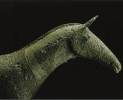 In archaeology, European prehistory has long been perceived as a series of unrelated local and regional developments. However, an emerging theory suggests that travels and cultural transmissions are important triggers of societal changes. An ERC Advanced grantee, Professor Kristian Kristiansen based at the University of Gothenburg (Sweden) endeavours to identify people travels and ideas transmissions during the Bronze Age - a historical period characterised by major social and cultural transformations in Europe. By applying a combined archaeological and biomolecular approach, the research project will potentially provide a new picture of highly mobile Bronze Age societies and transcultural flows with relevance to present societies. The project also aims to study the sources of metals and textiles as an additional triggering factor in this new world of social and economic connectivity. Furthermore, this research might change our understanding and thinking about human mobility as a key factor for cultural and social changes.
In archaeology, European prehistory has long been perceived as a series of unrelated local and regional developments. However, an emerging theory suggests that travels and cultural transmissions are important triggers of societal changes. An ERC Advanced grantee, Professor Kristian Kristiansen based at the University of Gothenburg (Sweden) endeavours to identify people travels and ideas transmissions during the Bronze Age - a historical period characterised by major social and cultural transformations in Europe. By applying a combined archaeological and biomolecular approach, the research project will potentially provide a new picture of highly mobile Bronze Age societies and transcultural flows with relevance to present societies. The project also aims to study the sources of metals and textiles as an additional triggering factor in this new world of social and economic connectivity. Furthermore, this research might change our understanding and thinking about human mobility as a key factor for cultural and social changes.
Principal Investigator: Prof. Kristian Kristiansen
Host Institution: University of Gothenburg, Sweden
ERC Project: Travels, transmissions and transformations in temperate northern Europe during the 3rd and 2nd millennium BC: the rise of Bronze Age societies (The Rise)
ERC Call: Advanced Grant 2010
ERC Funding: €2.48 million for five years
Researcher’s webpage
Picture: Horse from Trundholm ©LDA Sachsen Anhalt. Juraj Liptac
Decoding urban diversification in today’s global cities
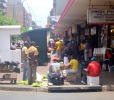 In public spaces compared across cities, what accounts for similarities and differences in social and spatial patterns that arise under conditions of diversification: when new diversity’ meets ‘old diversity’? Addressing this core question, the multi-sited project entails research in New York (a classic example of a city of immigration with new global migrant flows in a broadly supportive political context), Singapore (dominated by racial-cultural politics, and wholly dependent on new, highly restricted migrants), and Johannesburg (emerging from Apartheid with tensions around unregulated new, pan-African migrant flows). In each of the selected neighbourhoods in these cities, new migrants from a wide variety of origins and with a range of legal statuses comprise more than 40% of the local population. Spanning anthropology and human geography to research the changing nature of diversity and its socio-spatial patterns, strategic methods within the project entail ‘conceiving’ (exploring how old and new diversities are locally understood), ‘observing’ (producing ethnographies of interaction) and ‘visualising’ (using images, innovative data-mapping, and the production of five ethnographic films) comparative contexts of migration-driven diversity.
In public spaces compared across cities, what accounts for similarities and differences in social and spatial patterns that arise under conditions of diversification: when new diversity’ meets ‘old diversity’? Addressing this core question, the multi-sited project entails research in New York (a classic example of a city of immigration with new global migrant flows in a broadly supportive political context), Singapore (dominated by racial-cultural politics, and wholly dependent on new, highly restricted migrants), and Johannesburg (emerging from Apartheid with tensions around unregulated new, pan-African migrant flows). In each of the selected neighbourhoods in these cities, new migrants from a wide variety of origins and with a range of legal statuses comprise more than 40% of the local population. Spanning anthropology and human geography to research the changing nature of diversity and its socio-spatial patterns, strategic methods within the project entail ‘conceiving’ (exploring how old and new diversities are locally understood), ‘observing’ (producing ethnographies of interaction) and ‘visualising’ (using images, innovative data-mapping, and the production of five ethnographic films) comparative contexts of migration-driven diversity.
Principal Investigator: Prof. Steven A. Vertovec
Host Institution: Max Planck Institute for the Study of Religious and Ethnic Diversity, Gottingen, Germany
ERC Project: Migration and New Diversities in Global Cities: Comparatively Conceiving, Observing and Visualizing Diversification in Urban Public Spaces (GLOBALDIVERCITIES)
ERC Call: Advanced Grant 2010
ERC Funding: €2.2 million for five years
Researcher’s webpage
Picture: Street scene, Hillbrow, Johannesburg, South Africa; October 2012 ©Courtesy of Prof. S.A. Vertovec
Predicting people’s response to water disasters
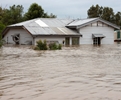 Human societies are haunted by a sense of vulnerability in the face of major environmental disasters and global climate change. These natural hazards are usually associated with a loss of natural resources, a fear of nature that is increasingly unpredictable and social disruptions as natural habitats are destroyed. Water is the most vital natural resource. However, unexpected changes in water levels and water supplies can also be devastating. ERC grantee Professor Kirsten Hastrup and her research team endeavour to examine people’s apprehension of disastrous environmental changes by studying three kinds of water-provoked crises: 1) melting ice in the Arctic area and in the Peruvian Highlands, 2) rising seas in the Pacific and along the Indian coast, 3) and drying lands mainly in West Africa. Her innovative project promises to reveal a new understanding of the ability of societies to deal with water borne environmental crises and how people respond to related uncertainties. In the process, the project will show how nature and society are deeply interconnected.
Human societies are haunted by a sense of vulnerability in the face of major environmental disasters and global climate change. These natural hazards are usually associated with a loss of natural resources, a fear of nature that is increasingly unpredictable and social disruptions as natural habitats are destroyed. Water is the most vital natural resource. However, unexpected changes in water levels and water supplies can also be devastating. ERC grantee Professor Kirsten Hastrup and her research team endeavour to examine people’s apprehension of disastrous environmental changes by studying three kinds of water-provoked crises: 1) melting ice in the Arctic area and in the Peruvian Highlands, 2) rising seas in the Pacific and along the Indian coast, 3) and drying lands mainly in West Africa. Her innovative project promises to reveal a new understanding of the ability of societies to deal with water borne environmental crises and how people respond to related uncertainties. In the process, the project will show how nature and society are deeply interconnected.
Principal Investigator: Prof. Kirsten Hastrup
Host institution: University of Copenhagen, Denmark ERC
Project: Natural environmental disasters and social resilience in anthropological perspective (Waterworlds)
ERC Call: Advanced Grant 2008
ERC funding: €2.98 million for four years
Researcher’s webpage
Project website
An historical dimension of herding practices in Europe
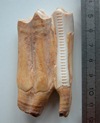 It is well known that domestic species such as sheep, goats, cattle and pigs entered Europe from the 7th millennium BC. Their spread, which occurred outside their traditional environments, has implied some modifications of their dietary and reproductive behaviours. The objective of ERC grantee Doctor Marie Balasse, based at the Muséum national d’Histoire naturelle (Paris, France), is to evaluate the environmental and physiological constraints on the adaptation of stock-keeping in Europe and to determine how Neolithic herders have modulated the biological system of these domestic animals. Her team uses stable isotope analysis on bone remains and skeletons to investigate their diet history. They also assess the onset and the length of the birth-period for bovines, ovines, caprines and pigs in various environments throughout Europe, as well as the duration of their lactation period. By using a variety of disciplines ranging from geochemistry to zooarchaeology, the team hopes to further our understanding of adaptation in farming across Europe.
It is well known that domestic species such as sheep, goats, cattle and pigs entered Europe from the 7th millennium BC. Their spread, which occurred outside their traditional environments, has implied some modifications of their dietary and reproductive behaviours. The objective of ERC grantee Doctor Marie Balasse, based at the Muséum national d’Histoire naturelle (Paris, France), is to evaluate the environmental and physiological constraints on the adaptation of stock-keeping in Europe and to determine how Neolithic herders have modulated the biological system of these domestic animals. Her team uses stable isotope analysis on bone remains and skeletons to investigate their diet history. They also assess the onset and the length of the birth-period for bovines, ovines, caprines and pigs in various environments throughout Europe, as well as the duration of their lactation period. By using a variety of disciplines ranging from geochemistry to zooarchaeology, the team hopes to further our understanding of adaptation in farming across Europe.
Principal Investigator: Dr Marie Balasse
Host institution: Muséum National d’Histoire Naturelle, Paris, France
ERC Project: Stable isotope investigations on the adaptations of Neolithic husbandry to the diverse climatic and environmental settings of Eastern, Central and Western Europe (SIANHE)
ERC Call: Starting Grant 2007
ERC funding: €883,000 for five years
Researcher’s webpage
Picture: ©Courtesy of Dr M. Balasse

